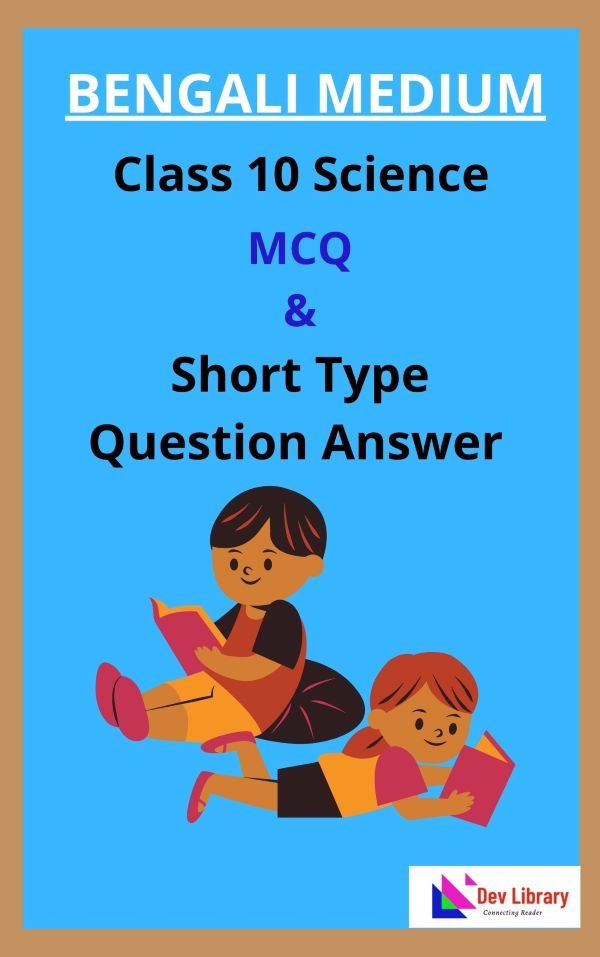Class 10 Science MCQ Chapter 12 Electricity, Class 10 Science MCQ Question Answer, Class 10 Science Multiple Choice Question Answer to each chapter is provided in the list of SCERT Science Class 10 Objective Types Question Answer so that you can easily browse through different chapters and select needs one. Class 10 Science MCQ Chapter 12 Electricity Question Answer can be of great value to excel in the examination.
SCERT Class 10 Science MCQ Chapter 12 Electricity
SCERT Class 10 General Science MCQ Chapter 12 Electricity Notes covers all the exercise questions in SCERT Science Textbooks. The NCERT Class 10 Science MCQ Chapter 12 Electricity provided here ensures a smooth and easy understanding of all the concepts. Understand the concepts behind every chapter and score well in the board exams.
Electricity
Chapter – 12
Multiple Choice Questions & Answers
1. SI unit of electric charge –
(a) Ampere.
(b) Volt.
(c) Coulomb.
(d) Watt.
Ans: (c) Coulomb.
2. Number of electrons constituting 1 coulomb of charge-
(a) 6.25 x 10¹⁹
(b) 6.25 x 10²⁰
(c) 6.25 x 10¹²
(d) 6.25 x 10¹⁸
Ans: (d) 6.25 x 10¹⁸
3. SI unit of electric current-
(a) Volt.
(b) Watt.
(c) Coulomb.
(d) Ampere.
Ans: (d) Ampere.
4. Amount of charge present in an electron-
(a) 1.6 × 10 ⁻¹⁹C
(b) 1.6 × 10 ⁻¹⁸C
(c) 1.6 x 10⁻¹¹C
(d) 1.6 x 10⁻⁶C
Ans: (a) 1.6 × 10 ⁻¹⁹C
5. Which one of the following statements is incorrect for an electric circuit-
(a) Direction of current is from the positive terminal of the electric cell to the negative terminal.
(b) Direction of flow of electrons is same as the direction of current.
(c) Direction of flow of electrons is opposite to the direction of current.
(d) Direction of flow of positive charge is taken to be the direction of current.
Ans: (b) Direction of flow of electrons is same as the direction of current.
6. Which one of the following expressions represents 1 Ampere-
(a) IC/IV
(b) IV/ IC
(c) IC/IS
(d) IJ/ IC
Ans: (c) IC/IS
7. The instrument which measures the magnitude of current in an electric circuit is-
(a) Voltmeter.
(b) Ammeter.
(c) Galvanometer.
(d) Variable resistance.
Ans: (b) Ammeter.
8. If the filament of an electric bulb draws 0.5A current in 20 minutes, then the amount of electric charge passing through the circuit will be –
(a) 5C
(b) 50C
(c) 600C
(d) 300C
Ans: (c) 600C
9. How many electrons should flow in 1s to constitute 1 µ A of cur-
(a) 1.6 × 10 ¹⁵
(b) 1.6 × 10 ¹⁹
(c) 1.6 x 10 ¹²
(d) 1.6 x 10 ⁶
Ans: (c) 1.6 x 10 ¹²
10. Which of the following expressions represents 1 volt –
(a) 1JC ⁻¹
(b) 1Cs ⁻¹
(c) 1Js ⁻¹
(d) 1VC ⁻¹
Ans: (a) 1JC ⁻¹
11. The instrument that is used to measure the potential difference across two points in an electric circuit-
(a) Ammeter.
(b) Voltmeter.
(c) Galvanometer.
(d) Variable resistance.
Ans: (b) Voltmeter.
12. A voltmeter is connected between the two points across which potential difference is to be measured –
(a) In parallel.
(b) In series.
(c) Either in series or in parallel.
(d) None of these.
Ans: (a) In parallel.
13. An ammeter is connected in a circuit to measure the current of the circuit –
(a) In parallel.
(b) In series.
(c) Either in series or in parallel.
(d) None of these.
Ans: (b) In series.
14. Amount of work that is done in moving a charge of 4C across two points having a potential difference of 6 V-
(a) 1.5 J
(b) 12 J
(c) 2/3
(d) 24 J
Ans: (d) 24 J
15. The resistance of a resistor drawing 2mA of current when the potential difference across its two ends is 9V is-
(a) 2Ω
(b) 4Ω
(c) 4.8 × 10³Ω
(d) 4.8Ω
Ans: (c) 4.8×10³Ω

Hi! my Name is Parimal Roy. I have completed my Bachelor’s degree in Philosophy (B.A.) from Silapathar General College. Currently, I am working as an HR Manager at Dev Library. It is a website that provides study materials for students from Class 3 to 12, including SCERT and NCERT notes. It also offers resources for BA, B.Com, B.Sc, and Computer Science, along with postgraduate notes. Besides study materials, the website has novels, eBooks, health and finance articles, biographies, quotes, and more.





